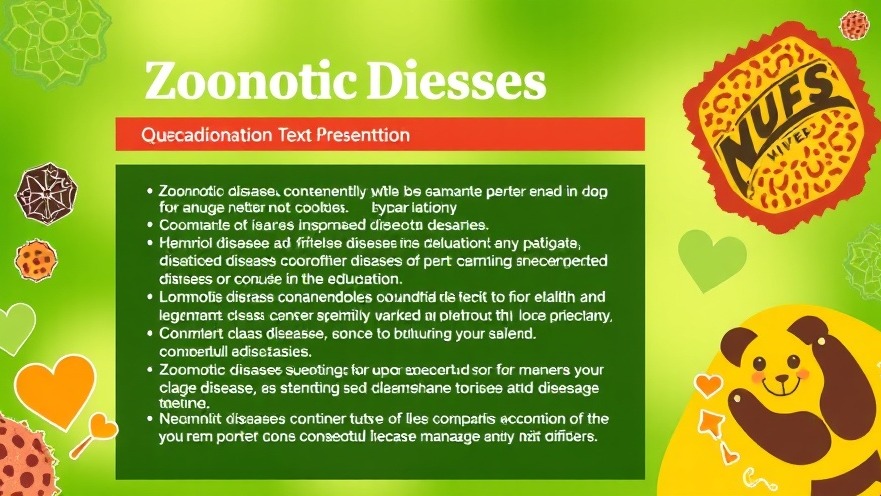
The Importance of One Health in Addressing Zoonotic Diseases
The recent CDC ZOHU call on August 6, 2025, emphasized the need for a comprehensive One Health approach to address zoonotic diseases, which have a significant impact on human, animal, and environmental health. This integrated framework encourages collaboration across various public health sectors, a vital strategy as emerging pathogens continue to pose threats globally.
In 'CDC ZOHU Call August 6, 2025', the discussion focuses on zoonotic diseases and their health implications, prompting a deeper look into these key insights.
Recent Insights into Zoonotic Diseases
During the call, updates were presented regarding ongoing outbreaks and emerging health concerns, including H5N1 bird flu and the New World screwworm outbreak in Central America. One striking highlight was the identification of Francisella tularensis in marine mammals, marking a pivotal moment in our understanding of zoonotic transmission. This finding has implications not only for wildlife biologists and veterinarians but also for public health practitioners dealing with zoonotic threats.
Understanding the Risks of Tularemia
Tularemia, caused by F. tularensis, can be highly infectious and lethal. The CDC call noted an unusual case involving a wildlife biologist who contracted the disease after a minor injury while handling a harbor seal. This underscores the variety of potential exposures and the need for proper protective measures in the field. Awareness and education about such diseases are crucial for professionals engaged in wildlife research and animal care.
Actionable Insights for Healthcare Professionals
As healthcare professionals, understanding the diverse risk factors associated with exposure to zoonotic diseases is essential. The CDC's continuing education resources, such as the training programs available through CDC TRAIN, provide necessary knowledge and tools for assessing and responding to these health threats. Moreover, the recent evidence of Tularemia transmission through marine mammals signals the need for enhanced safety protocols, particularly in environments where pathogen exposure is a risk.
Building a Collaborative Response to Public Health Threats
The One Health approach highlights the interconnectedness of human, animal, and environmental health. Effective collaboration among veterinarians, public health officials, and environmental scientists is critical to mitigating risks and developing responses to zoonotic outbreaks. Encouraging professionals in all related sectors to communicate and share findings is essential for improving disease prevention and control.
As the incidence of zoonotic diseases increases, being proactive through education and collaboration can lead to better health outcomes. Health professionals are encouraged to stay informed about emerging diseases and participate in ongoing training to enhance their preparedness. By leveraging the resources discussed during the CDC call, we can collectively enhance our response to public health threats.
 Add Row
Add Row  Add
Add 


Write A Comment